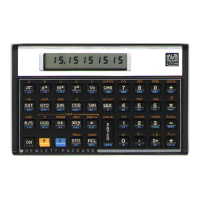74
Section
3:
Calculating
in
Complex Mode
Y
To
require approximations with accurate components
is to
demand
more
than
keeping relative errors small.
For
example, consider
this
problem
in
which
the
calculations
are
done with
four
significant
digits.
It
illustrates
the
limitations
imposed
on a
complex
calculation
by
finite accuracy.
22
=
Z2
=
37.5+
37.3*
and
"1
X
^2
=
(37.10
X
37.50
-
37.30
X
37.30)
+
z(37.10
X
37.30
+
37.30
X
37.50)
=
(1391.
-
1391.)
+i(1384.
+
1399.)
=
0
+
/(2783.)
The
true value
z^z2
=
-0.04
+
2782.58*.
Even though
Zl
and
Z2
have
no
error,
the
real
part
of
their
four-digit product
has no
correct
significant decimals, although
the
relative error
of the
complex
product
is
less
than
2 X
10~4.
The
example
illustrates
that
complex multiplication doesn't
propogate
its
errors componentwise.
But
even
if
complex
multiplication produced accurate components,
the
rounding errors
of
a
chain
computation could quickly produce inaccurate
components.
On the
other hand,
the
relative error, which
corresponds
to the
precision
of the
calculation, grows only slowly.

